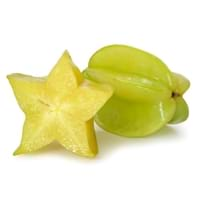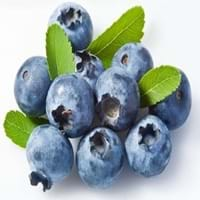Health Benefits
Cancer prevention, Heat stroke treatment
Cancer prevention, Cures gastro-intestinal troubles, Improves night vision, Improves stomach health, Prevents diabetes, Prevents high blood pressure, Reduces blood circulation problems
General Benefits
Anti oxidant properties, Anti-inflammatory properties, Digestive aid, Maintains healthy cholesterol level, Treatment of sore eyes
Fights against infections, Helps in weight loss, Prevents blood clotting in vessels, Treatment of urinary tract infections
Skin Benefits
Anti-aging benefits, Heals sunburn, Skin rejuvenation
Anti-aging benefits, Nourishes skin, Protects against skin damage
Hair Benefits
Promotes longer and healthier hair, Protects hair
Prevents hair loss
Allergy Symptoms
NA
Not Available
Side Effects
Nausea, Vomiting
Decrease in blood sugar levels, Diarrhoea, Dizziness, Headache, Internal bleeding, Stomach pain
Best Time to Eat
As a snack in the late afternoon, Eat the fresh ones, avoid mixing with any other foods, don't eat after meal., Strictly avoid empty stomach
As a snack in the late afternoon, Don't consume at night and before bed, Eat the fresh ones, avoid mixing with any other foods, don't eat after meal., Morning time (before lunch)
Vitamin B5 (Pantothenic Acid)
Vitamin C (Ascorbic Acid)
Vitamin K (Phyllochinone)
Calories in Fresh Fruit with Peel
Calories in Fresh Fruit without Peel
Not Available
Not Available
Calories in Frozen Form
Not Available
Not Available
Calories in Dried Form
Not Available
Calories in Canned Form
Not Available
Not Available
Calories in Jam
Not Available
Calories in Pie
Not Available
Season
Autumn, Spring, Summer
Summer
Varieties
King, Bell, Sri Kembangan, Arkin and Fwang Tung
Dwarf bilberry, Piper, bog blueberry, Northern bilberry, Mountain bilberry and Oval-leaved bilberry
Color
Golden yellow, Green
Dark purple
Inside Color
Yellowish Green
Light Green
Shape
Oval and Star(Cross section)
Round
Taste
Crisp, Juicy, Sweet
Sweet
Grows on
Not Available
Trees
Soil Type
Loam, Well-drained
Moist, Well-aerated
Climatic Conditions
Moist, Warm to hot climate
Cold
Facts about
- When carambola is cut horizontally, it forms a star.
- It is believed that carambola helps to cure hangover.
- Entire carambola is edible, including its skin.
- 2 varieties of carambola are cultivated: tart & sweet.
- Bilberries are used in manufacturing of alcoholic drinks.
- They are used to improve aromas of sorbets.
- The green extract of it's leaves is used in textile industry as natural dye.
Top Producer
Taiwan
Japan
Other Countries
Australia, Guyana, India, Israel, Malaysia, Philippines, United States of America
Denmark, Finland, Iceland, Sweden
Top Importer
Europe
United States of America
Top Exporter
Malaysia
Chile
Botanical Name
Averrhoa carambola
Vaccinium myrtillus
Synonym
Not Available
blaeberry, whinberry, European blueberry, whortleberry
Subkingdom
Tracheobionta
Tracheobionta
Division
Magnoliophyta
Magnoliophyta
Class
Magnoliopsida
Magnoliopsida
Subclass
Rosidae
Dillenhidae
Order
Oxalidales
Ericales
Family
Oxalidaceae
Ericaceae
Species
A. carambola
Vaccinium myrtillus
Generic Group
Not Available
Heath
Difference Between Carambola and Bilberry
We might think that Carambola and Bilberry are similar with respect to nutritional value and health benefits. But the nutrient content of both fruits is different. Carambola and Bilberry Facts such as their taste, shape, color, and size are also distinct. The difference between Carambola and Bilberry is explained here.
The amount of calories in 100 gm of fresh Carambola and Bilberry with peel is 31.00 kcal and 44.00 kcal and the amount of calories without peel is Not Available and Not Available respectively. Thus, Carambola and Bilberry belong to and category.These fruits might or might not differ with respect to their scientific classification. The order of Carambola and Bilberry is Oxalidales and Ericales respectively. Carambola belongs to Oxalidaceae family and Bilberry belongs to Ericaceae family. Carambola belongs to Averrhoa genus of A. carambola species and Bilberry belongs to Vaccinium genus of Vaccinium myrtillus species. Beings plants, both fruits belong to Plantae Kingdom.









